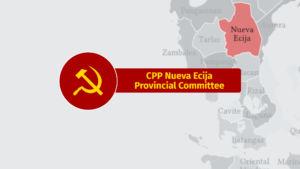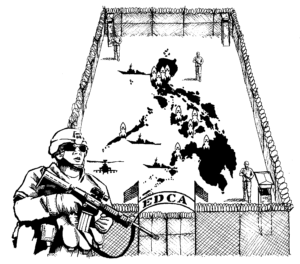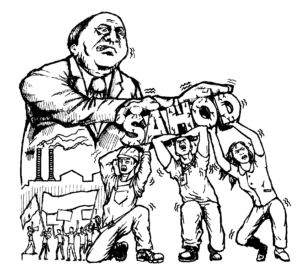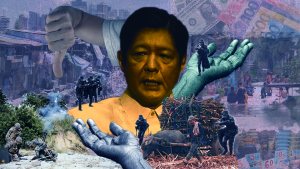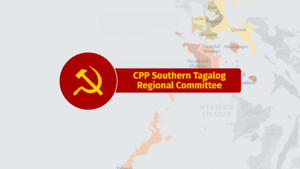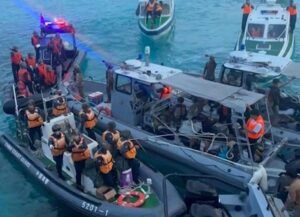Breaking down the NTF-ELCAC's pork barrel aka Barangay Development Program funds

Read in: Pilipino
We maintain that the P16.4 billion Barangay Development Program (BDP) funds of the National Task Force to End Local Communist Armed Conflict (NTF-ELCAC) is nothing but military pork barrel. And like congressional pork barrel, the BDP will be subject to corruption in the form of kickbacks in government infrastructure projects that will be pocketed by both local government officials and military officers in connivance with contractors.
As we have already pointed out, this program, which is supposed to dissuade the peasant masses from further supporting the New People’s Army, does not address the fundamental problem of landlessness, from which the peasant’s armed resistance persistently arises. Widespread poverty, hunger, oppression and exploitation in the countryside all stem from the question of land ownership. This involves such problems as oppressive land rent, usurious loans, overpriced farm inputs, land grabbing and displacement and incursion into the ancestral domain of the minority communities.
The NTF-ELCAC, however, does not at all address these questions. Based on the announcement by National Security Adviser Hermogenes Esperon, the BDP’s funds will go to road construction, building schools, to water systems, sanitation, reforestation and health centers. These will only create the superficial illusion of change but will not fundamentally alter the socioeconomic conditions of the people.
That the BDP is basically pork barrel can be seen by breaking it down in several aspects.
1. The BDP clearly favors Davao City under which 82 barangays are listed in the BDP (or 9.97%). Next to Davao City, the top ten provinces with the biggest number of barangays in the BDP are Bukidnon, Davao de Oro, Agusan del Norte, Surigao del Norte, Surigao del Sur, Agusan del Sur, Iloilo, Misamis Oriental and North Cotabato. Except for Iloilo, all these are in Mindanao.
Almost half (49.4%) of the total BDP funds is shared between two regions, namely Region 11 and Region 13 (Caraga). The rest of the funds is distributed in the rest of the 12 regions.
2. According to the NTF-ELCAC, these funds are to be alloted to so-called “cleared” barangays, barangays where there is supposedly no more NPA presence. The basis for determining this, however, is not clear. Considering the fluid nature of the war, the presence of the NPA in one barangay is never constant. With the deep-going support of the masses, the NPA can move from one village to the other, depending on the situation and its priorities.
Based on data since 2020, there were at least 100 armed encounters recorded in 46 (5.3%) of the barangays included in the NTF-ELCAC’s BDP. There were 21 incidents during the first quarter of 2020, 35 in the Q2, 15 in the Q3 and 24 in Q4 in barangays included in the BDP. Since the start of the year, armed encounters erupted in at least four of the barangays in the BDP list, all in Bukidnon, specificaly in Canangaan, Cabanglasan; Banlag, Valencia City; Mandahikan, Cabanglasan; and Palacapao, Quezon.
Further indicating the questionable method for determination of what is a “cleared” barangay, 9 out of 16 barangays in Quezon province listed in the NTF-ELCAC’s BDP were subjected to several days of massive ground military operations last February 5, after an armed encounter erupted in Catanauan, Quezon.
3. Equal distribution to unequal needs. The NTF-ELCAC claims that the BDP list was “vetted” by government officials based on the needs of the barangays. But the uniform distribution of ₱20 million each reveal that there really was no assessment of the specific needs of its recipients and that the amount is merely to give local officials equal kickback opportunities. Surely, the need of one barangay is different from another.
That there was no real plan in the distribution of ₱20 million to each barangay can quickly be seen if one considers the different population sizes of these barangays. Using the 2015 census figures, one can see that the population of each barangay in the list ranges from 110 in Barangay Minanga, Rizal, Cagayan; to 43,758 in Barangay Cabantian, Davao City. As a result, there is a wide disparity in the per capita distribution of the BDP funds from ₱457.05 in the biggest barangay to ₱181,818.18 in the smallest barangay.
4. The NTF-ELCAC claims that at least 15% of the funds of the BDP will go to constructing schools (or ₱3 million per barangay). However, using the 2018 data of the Department of Education, we have determined that of the 822 barangays in the NTF-ELCAC’s BDP list, at least 26% or 216 barangays have already at least one school in their barangay. There are 346 schools overall in these barangays.
In Region 11, where the first tranche of the ₱4.3 billion of BDP funds was released, 89 barangays already have schools. This includes 9 schools in Malabog, Davao City; 6 schools in Colosas, Davao City; 5 schools each in Barangay Kingking, Pantukan, and Barangays Tamugan and Malamba in Davao City; and 4 schools in Suawan, Davao City. Furthermore, in the BDP list of barangays in Region XI, there are 13 barangays with at least 3 schools each; 18 barangays that have 2 schools each, and 52 barangays with 1 school.
Of the 82 BDP-listed barangays in Davao City, 70 (or 85%) already have schools, with 65 barangays having 1 to 3 schools, and 4 barangays with up to 2 schools and one barangay with 9 schools.
We can further break down the BDP and look into its other facets. The four observations above, however, is sufficient to expose the lies and duplicity of the NTF-ELCAC over the matter of its ₱16.4 billion pork barrel.
Breakdown of NTF-ELCAC’s BDP: Download

